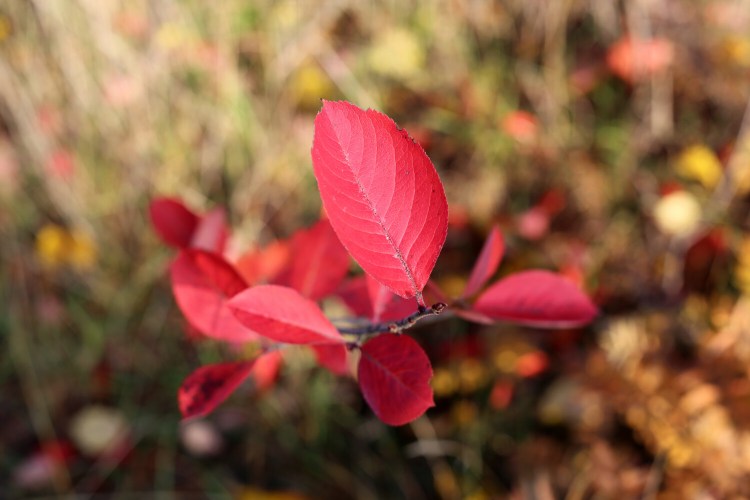Maine, like its fellow New England states, is famous for its fall foliage. Cars crowd mountain and foothills roads as both visitors and locals admire the beautiful vistas of red, orange and yellow. Visits from cruise ships also surge in September and October, the ships equally drawn by the bright leaves.
But how many maples, oaks, birches and such, which grow up to 75 feet tall, can your yard accommodate? Do grow a few, as they nurture local wildlife and help combat climate change. Then enjoy added fall colors at home with some of my favorite options for fall-foliage shrubs:
Several species of viburnum put on an excellent fall show of purples, maroons and reds, and many of these are native to the region. Better yet, some of those with thick, textured leaves and the best fall color are resistant to the viburnum leaf beetle.
One I like is Viburnum cassinoides, or witherod viburnum. It will grow in full shade to full sun and is resistant to the dastardly pest. The witherod viburnum has white flowers, which are followed by dark-blue berries that birds love. Its smooth, glossy foliage turns a gorgeous reddish purple in the fall.
We planted two of them in our garden a few years back, and so far have seen only two berries, but the foliage has been excellent. We bought them as tiny seedlings — now they stand about two feet tall — but we’re looking forward to the day they reach their full six feet tall.
Viburnum lentago, or nannyberry, is another native that we planted last year after we were awed by the vast display of flowers we saw growing in the wild near the section of the White Mountain National Forest that juts into Maine. Nannyberry’s foliage turns maroon in the fall, and it has bluish fruit.
Viburnum nudum, or “Winterthur,” produces good fruit, and its foliage is orange-red, which provides variety next to the maroons and purples of its fellow viburnum.
Two non-native viburnums that also provide excellent fall color are the mayflower or Koreanspice viburnum and the “Shasta” viburnum and its relatives.
Fothergilla, which has the common name bottlebrush because of its spiky flowers, is native to the American Southeast. It grows well in Maine, however, and produces orange to red fall foliage, depending on the variety. Fothergilla major, which grows eight feet tall, was a Cary Award winner in 1997.
Before she retired as ornamental horticulturist with the University of Maine, Lois Berg Stack was urging Mainers to grow aronia, either red or black chokeberry. The native shrubs grow eight to 10 feet tall, have white flowers in May and produce berries that are high in antioxidants. The berries are so sour that they are almost inedible for humans as is. But mixed with other fruit to make juices or added to recipes, they can be eaten. Wildlife like them just as they are. Chokeberries are easy to grow from full shade to full sun, naturalize well (translate to: can take over your garden if you ignore it for a few years.) They produce a brilliant red foliage that rivals that of the now-banned burning bush.
Itea virginica, or sweetspire with “Little Henry” the most common cultivar, is a much smaller native shrub; it grows only three feet tall. That said, it produces brilliant red foliage and has white flower spikes in early summer.
Blueberries, both high-bush and low-bush, produce bright red foliage in addition to their tasty fruit. They need full sun, but work well in an ornamental landscape.

Oak leaf hydrangea produces white flowers (if you’re lucky) and beautiful red leaves in the fall. Photo by EQRoy/Shutterstock
Oak leaf hydrangea is a native plant. It can be either a vine or a shrub, depending on the variety, and turns a brilliant red in the fall. The vines, which grow up to 20 feet on trees or other structures, produce flat white flowers, but the shrubs don’t bloom reliably in Maine.
The last shrub was a surprise to me. People usually plant “Arnold Promise” witch hazel because it produces beautiful yellow flowers in March, when most other plants in these parts don’t even have leaves, never mind blossoms. And while the shrub essentially disappears for most of the summer, if it is in a full-sun location it produces yellow, orange and red foliage come fall – a nice bonus to its early-spring show.
Tom Atwell has been writing the Maine Gardener column since 2004. He is a freelance writer gardening in Cape Elizabeth and can be contacted at 767-2297 or at: tomatwell@me.com
Comments are not available on this story.
Send questions/comments to the editors.


